As part of our new fiber optic guide series, we need to start addressing connectors. While Patrick is installing a MPO/ MTP network, which is a higher-density connector, the most basic connectors many of our readers will encounter include either the SC or LC connectors. In this quick guide, we are going to discuss the differences, and more importantly, have a recommendation on which you should choose.
Fiber Optic Networking Guide SC or LC Connector
Fiber optic cables are awesome because one can transmit large amounts of data further and more efficiently at distance than with copper. On the other hand, copper is cheap and easy to terminate to exact lengths in the field. As a result, it is usually less expensive and easier, especially in small quantities, to purchase pre-terminated fiber optic cables with connectors already attached. Many of our readers may be purchasing fiber optic cables, and want to know which connectors to use.
We are going to focus on the SC and LC connectors here. There are FC and ST connectors in this segment (often found on test and measurement gear as an example), SC and LC connectors are more popular these days, especially in smaller and data center networks. That is why we are going to focus on those.
The SC Connector
When we discuss SC, this is an abbreviation for Subscriber Connector. You may also hear people call this the standard connector, square connector, or I know someone that calls this the stick-click connector. SC was an innovative connector because it was very easy to install and performed well. It became popular in industries where companies were looking to minimize opportunities for truck rolls due to improperly installed connectors.
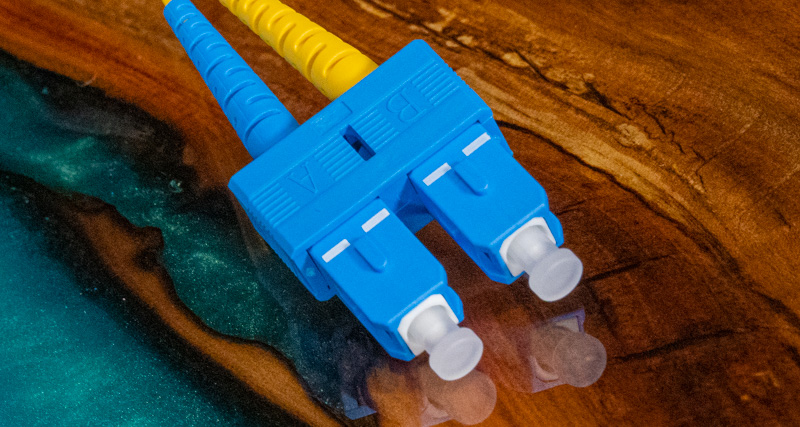
It was originally made by Nippon Telegraph and Telephone (NTT) and it is extremely popular in many industries such as telecom. The SC connector is extremely durable, and it is very easy to just push in/on or pull out/ off.
The LC Connector
Lucent Technologies developed LC connectors. LC stands for “Lucent Connector” even though we have heard some people call them the little connectors. The most popular connector in the world outlived the company that made it. LC was a response to the SC connector which pre-dated and dominated the market before it.
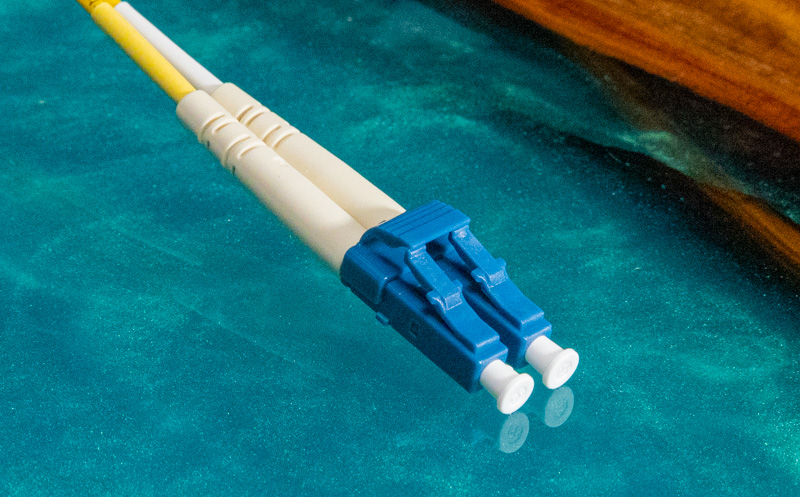
The key innovation for LC was that the ferrule is half the size of the SC connector. If you do not know what a ferrule is, think of it as the structured end to a cable that forms the connector (trying for a broad definition here since ferrules are used outside of just optical cabling.) LC connectors utilize a latch to keep the connector in place.
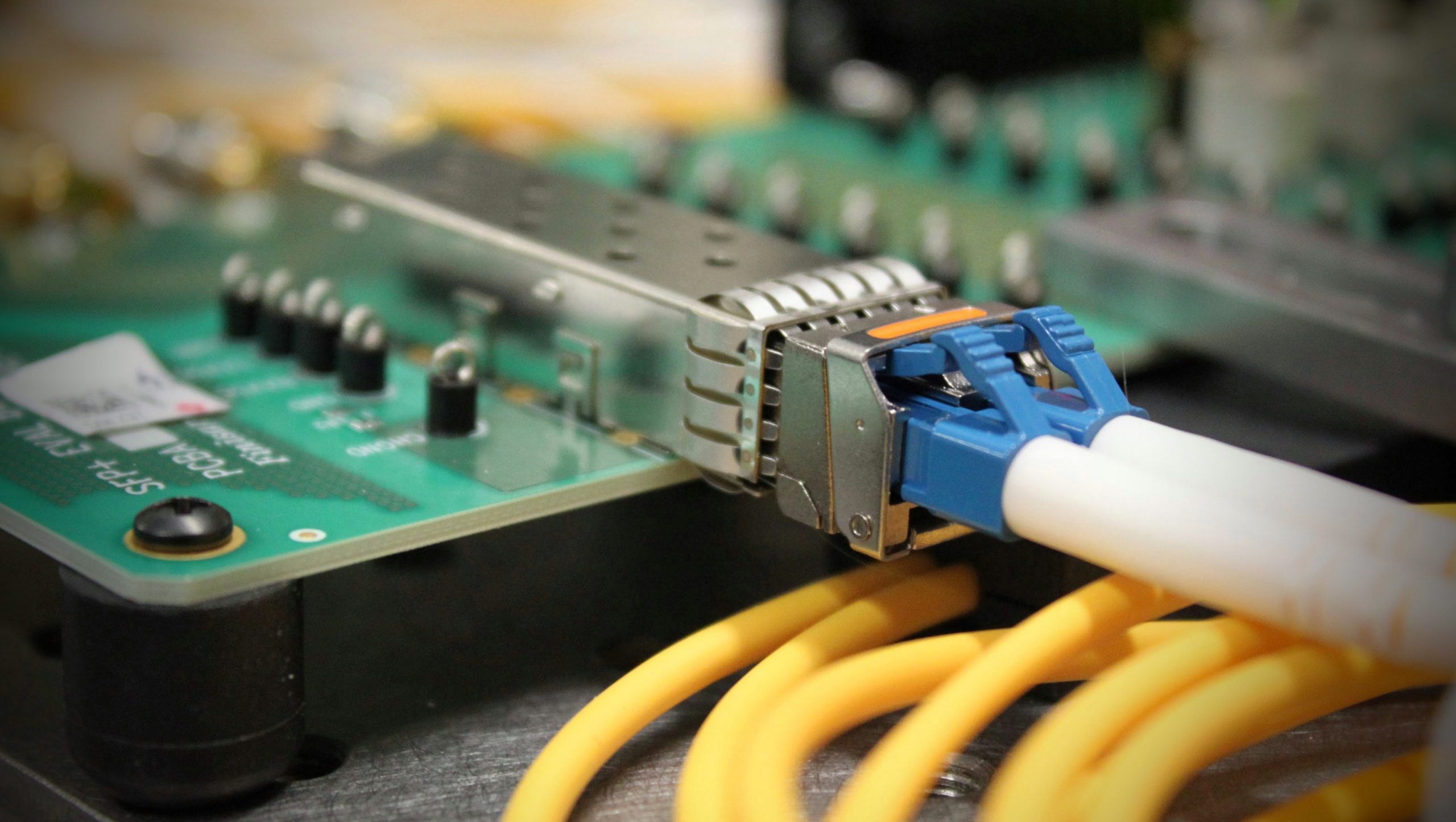
By LC connectors being half the size, optical networking could increase in density. Today’s 1U 48-port 25GbE + multiple 100GbE switches would be hard to accomplish with SC connectors just due to their size.
A quick note here, technically we are showing duplex connectors because there are two fibers. In the fiber optic cable that you are likely to use, you will have two fiber cables one passing data in each direction. That is why the LC duplex connectors are so popular and many people just call the duplex version of the connector the LC connector.
Our Recommendation and a Simple Explanation
Let us get to the more controversial aspect: a simple recommendation. Many sites simply say to use either. If you have existing SC panels, for example, then it may make sense to get at least some SC gear. We are going to heavily recommend LC for a lower-density connection, and here is a picture as for why, just look at the size.
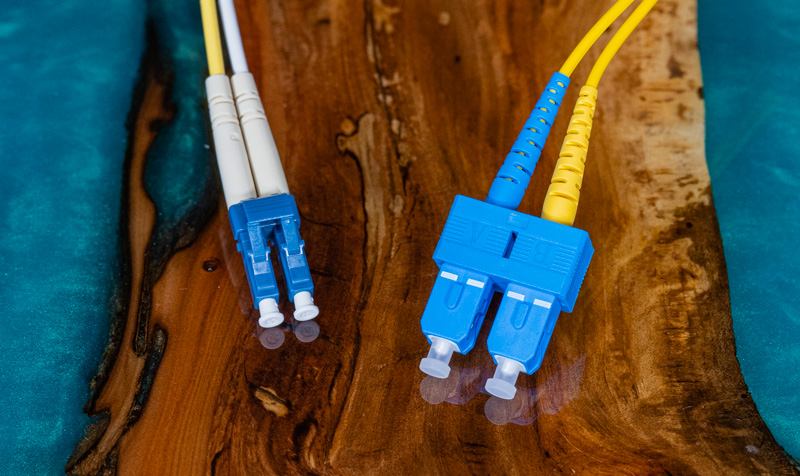
The LC connector fits into standard SFP+/ SFP28 form factors (SFP+ shown above.) Fiber with LC connectors can also be used in higher-end QSFP+ or QSFP28 and run 40GbE or 100GbE networking. There is a huge advantage to using a single connector that will fit into the optics that you are likely to find in switches, network cards, and motherboards. With SFP+ and SFP28 being so widely used, it makes a lot of sense to standardize as much as possible on that least common denominator of a connector. The fact that the connector is also used in higher-end 100GbE optics, as an example, just shows that it is quite useful.
| Ferrule Size (mm) | Mating Cycles | |
| SC | 2.50 | 1000 |
| LC | 1.25 | 500 |
Realistically, one can convert SC to LC and LC to SC without much trouble. One can also utilize cassettes such as this one to put multiple LC (or SC) links over a MTP higher-density cable. From a data performance perspective, SC and LC are very similar but SC is a higher mating cycle counter. For most of our readers, they are going to be unlikely to plug in these connectors 50 times per connector, let alone 500.
Still, since it is highly likely that our readers will have LC devices, standardizing on that for patch panels and other components can make a lot of sense.
Final Words
This series is coming out a bit slower than I had hoped. Still, we are going to have a regular series on STH covering fiber optic networking. Our Editor-in-Chief Patrick has a massive network that he is building out with over 1400 strands of fiber spanning 64km. We are trying to get this split into chunks that make sense for our readers, and ones that can be bookmarked as references, but it is an enormous content plan.
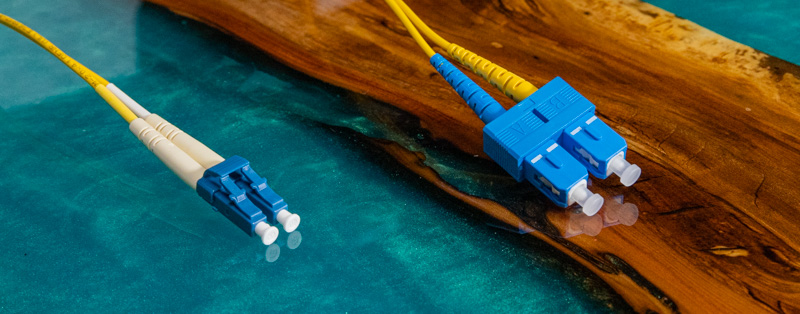
While there are so many options out there, and the industry undertakes a lot of interoperability, we are going to try taking stances like this where instead of just saying “both are OK” we give an opinion of which to choose unless there is a good reason to do something else.
Bonus Trivia: Why Not RJ-45 Size Connector?
Fiber optic cables themselves are very small. You may be wondering why do we have LC connectors instead of something that fits into RJ-45 footprints. In the mid-1990’s there was a MTRJ connector that was designed with this in mind. Ultimately, pluggable optics took over the switch and NIC markets and once LC was released in 2002 and then subsequently adopted, MTRJ largely became a historical footnote. If you wondered why the LC duplex and RJ-45 connectors are different footprints, another team had that thought and tried making the world a different place.

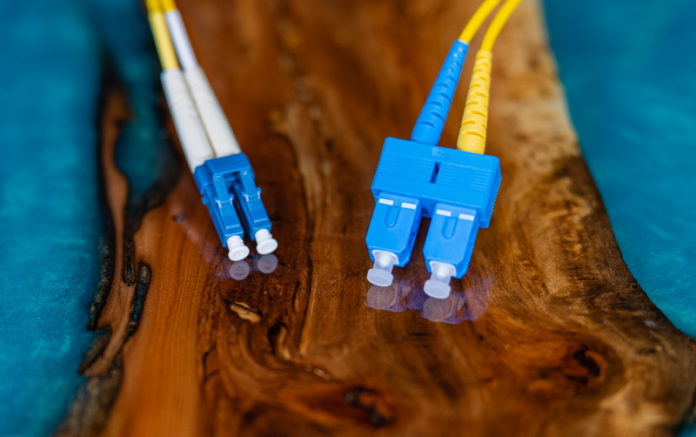



SC is more commonly used for dark fiber handoffs. I can’t think of another situation where I would use SC instead of LC, if I had the choice.
I’ve seen SC being used in hi rise fiber panels
I’ll also just say your LC recommendation is really like use LC unless there is something you have to connect to that is SC. I’ll admit though, it’s good you’re taking a stand. Too many LC or SC articles out there don’t just flat out tell people they want LC
What about the new SN connectors. How about A connector for single strand fiber using BiDi transceiver and a Ethernet switch for BiDi like Utopia.
Mike – they are on the list for a future piece. Most people buying SN know they need SN :-)
You missed out on MTP/MPO-12 connectors. While I wouldn’t expect too much going on for you with the 100G SR segment, in my datacenters, we are doing MTP to breakout panels regularly.
I’d agree with going with LC for the most part, I tend to use SC for FDP’s that will house maybe a 12-strand or 24-strand fiber just for ease of access. But if dozens of strands are going in, we’ll fall back to LC cassettes.
I’ve found that I prefer SC for patch panels just because it is so much easier to swap the cables in the duplex boot than LC. I just about gave up after needing to do 20 LC duplex swaps in a day, but I can do SC swaps all day long.
Standardizing on LC or SC is nice, but, it is easy to use a hybrid cord to adapt. The important thing is to make sure you are connecting the same fibers. MM to MM, SM to SM. Don’t get me started on APC termination. :-) (you are probably using UPC everywhere)
Yes, there are new conenctors, SC, CS, MDC, and even a few more now. These have a pretty specific focus on Data Center connections where space is at a premium and they need to break out to do a perfect shuffle. Interestingly, all these new connectos use an LC ferrule.
Hey — from a 20+ year data center veteran — SC connectors are considered obsolete at this point, and will only be found in very old equipment or very old patch panels.
And you forgot to mention how duplex connectors always seem to end up in the wrong polarity and you have to “roll” the fibers to get a connection to work :)
My mnemonic – it’s far easier to remember that SC = Square Cube and LC = Little Cube
You’re unlikely to buy GBICs these days, where SC was the standard. New kit will always use SFPs which have LC. Given this is “serve the home” the use of GBICs is possible, but they’re still 10+ years out of date.
If your structured cabling has SC, then buying SC-LC patch cables is the correct solution. Or you can get the fixed cable reterminated with LC ports, but that’s going to cost more and gain nothing.
Can we use a sc connector on one end and a lc connector on the other?